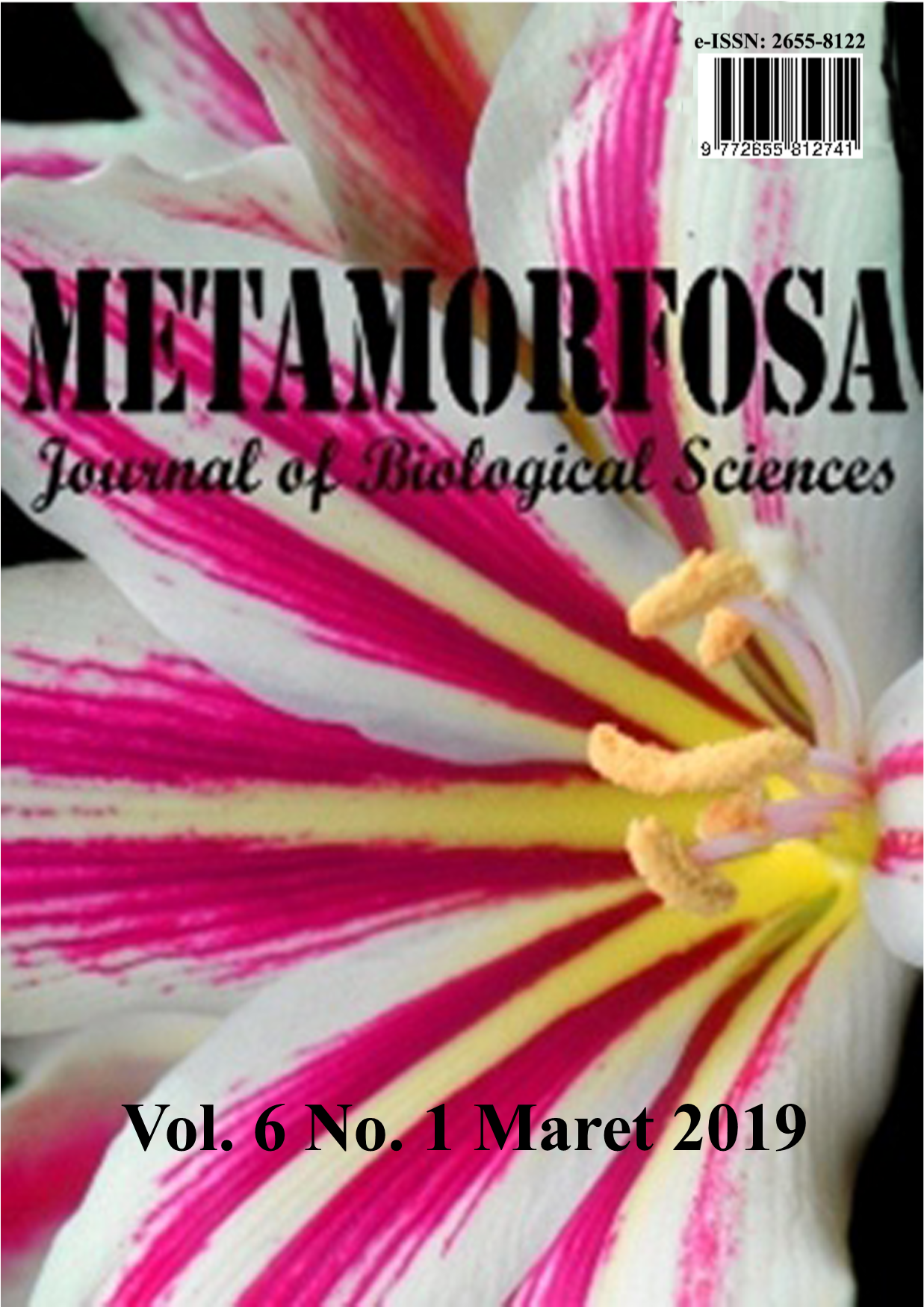Bioethanol from Banana Peel (Musa paradisiaca L.) with Simultaneous Saccharification and Fermentation
Abstract
Bioethanol is one of the energy alternatives which environmentally friendly and sustainable. This research employed Completely Randomized Design with Factorial. There were two treatments, namely without pretreatment and with pretreatment and these were factorized with three levels of urea, namely 0, 1 and 2% with three replications. Finely dry ground banana peel samples were pretreated with NaOH 6% w/v. Simultaneous saccharification and fermentation was performed in 60 mL fermenter. Sample (4% w/v) was placed in a fermenter and the following ingredients were added: 0.06 g KH2PO4, 0.06 g MgSO4 and citrate buffer with pH 5. Fermenter was enclosed and autoclaved at 121oC for 15 minutes and then cooled down at room temperature. Enzyme cellulose (6% w/v) and inoculum of Saccharomyces cerevisiae (10% v/v) were added into the fermenter. The mixture was incubated at 30oC for 9 days, and every day 3rd, 5th, 7th, and 9th was measured for reducing sugar content, pH and bioethanol content. Bioethanol content of the distillate was measured using picnometer. Data was analyzed using ANOVA (Analysis of Variance) with Minitab 17 software. If there was significant (P<0.05) analysis continued with Tukey Pairwise comparison to find the difference among treatments. Results showed that treatment (without pretreatment and with pretreatment of NaOH 6% b/v) combined with levels of urea gave significant effect on reducing sugar and bioethanol content in all observations. Combination of without pretreatment and urea level at 1% and 2% resulted in the highest bioethanol content of 4,91% v/v.Bioethanol is one of the energy alternatives which environmentally friendly and sustainable. This research employed Completely Randomized Design with Factorial. There were two treatments, namely without pretreatment and with pretreatment and these were factorized with three levels of urea, namely 0, 1 and 2% with three replications. Finely dry ground banana peel samples were pretreated with NaOH 6% w/v. Simultaneous saccharification and fermentation was performed in 60 mL fermenter. Sample (4% w/v) was placed in a fermenter and the following ingredients were added: 0.06 g KH2PO4, 0.06 g MgSO4 and citrate buffer with pH 5. Fermenter was enclosed and autoclaved at 121oC for 15 minutes and then cooled down at room temperature. Enzyme cellulose (6% w/v) and inoculum of Saccharomyces cerevisiae (10% v/v) were added into the fermenter. The mixture was incubated at 30oC for 9 days, and every day 3rd, 5th, 7th, and 9th was measured for reducing sugar content, pH and bioethanol content. Bioethanol content of the distillate was measured using picnometer. Data was analyzed using ANOVA (Analysis of Variance) with Minitab 17 software. If there was significant (P<0.05) analysis continued with Tukey Pairwise comparison to find the difference among treatments. Results showed that treatment (without pretreatment and with pretreatment of NaOH 6% b/v) combined with levels of urea gave significant effect on reducing sugar and bioethanol content in all observations. Combination of without pretreatment and urea level at 1% and 2% resulted in the highest bioethanol content of 4,91% v/v.





